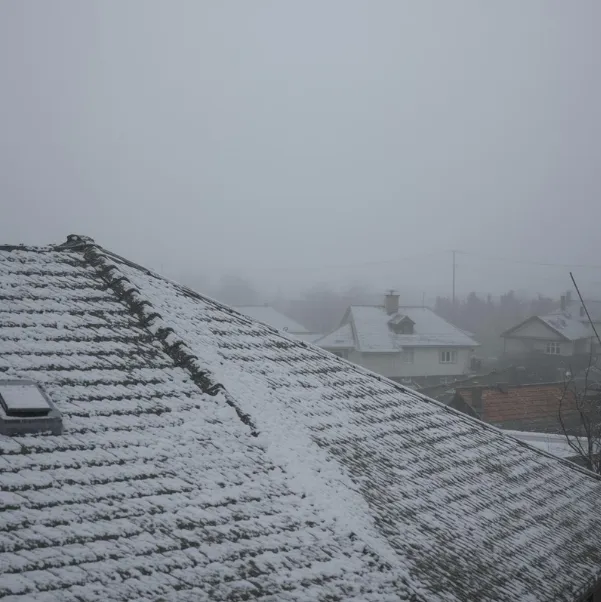The Four-Quarter Strategy: Seasonal Roof Upkeep Guidelines for Oklahoma City Homes

For Oklahoma City homeowners, the roof endures a unique, cyclical beating. Our climate provides four distinct, aggressive threats: the freeze/thaw cycle of winter, the cyclonic winds and hail of spring, the intense UV radiation of summer, and the debris load of fall. Effective roof maintenance cannot be a one-time event; it must be a Four-Quarter Strategy—a continuous, proactive cycle of care tailored to the specific stress of each season.
At Shoemaker Snoddy Roofing & Construction, our unique perspective is centered on Cyclical Asset Protection. We provide Seasonal Roof Upkeep Guidelines that target specific vulnerabilities at the precise moment they become threats. This approach maximizes shingle lifespan, prevents small issues from escalating, and, most importantly, secures the non-prorated manufacturer warranty on your investment.
This guide provides a direct, comprehensive breakdown of the essential maintenance tasks and professional inspections required quarterly to protect your home from the inevitable climate tax levied by the Oklahoma environment.
1. Winter Preparation (Late Fall): Sealing Against Cold and Moisture
The focus of late fall maintenance is water exclusion and structural hardening against cold weather stress. The main threat is the freeze/thaw cycle and moisture intrusion.

A. Gutter and Drainage Assurance
Clogged gutters are the number one cause of winter-related roof damage.
Debris Clearing: After all trees have shed their leaves, perform a thorough, final cleaning of all gutters and downspouts. Trapped leaves turn into acidic sludge that accelerates fascia board rot and prevents proper drainage.
Ice Dam Prevention: Clogged gutters force water to pool and freeze on the lower roof edge. This ice dam forces melting water backward, up under the shingles, leading to significant leaks and damage to the underlayment and decking. Clear gutters eliminate this risk.
Downspout Flow: Ensure downspout extensions are directing water at least six feet away from the foundation to prevent soil erosion and hydrostatic pressure on the basement walls.
B. Flashing and Sealant Inspection
Low temperatures compromise hardened sealants.
Chimney and Vent Seals: Inspect all vertical sealant lines around chimneys, skylights, and pipe boots. Look for cracks, gaps, or shrinkage caused by summer heat. Apply high-quality, flexible, cold-weather-rated sealant to all compromised areas.
Pipe Boot Check: Confirm the rubber collar around plumbing vents is intact and not dry-rotted. If brittle, schedule immediate replacement before the freeze cycle begins.
C. Attic Ventilation Verification
Winter ventilation controls moisture.
Soffit Clearance: Verify that attic insulation has not been pushed against the soffit vents, blocking the critical cool air intake. Proper airflow in winter prevents warm, moist air from condensing on the cold underside of the roof deck, which causes mold and wood rot.
2. Spring Resilience (Early Spring): The Post-Storm Damage Hunt
Spring maintenance is solely focused on identifying and documenting damage caused by cyclonic winds and hail before the summer heat settles in. The main threat is insurable loss.

A. Professional Storm Damage Assessment
Immediately after the severe weather season (typically May), schedule a professional inspection. This is the most crucial of all Seasonal Roof Upkeep Guidelines.
Hail Bruising: Expert inspection is required to find hidden damage. Hail impact often causes shingle bruising (internal fractures) and granular loss that is not visible from the ground but qualifies for an insurance claim.
Wind Damage: Technicians check the rake edges and ridge caps for broken adhesive seals and creased shingles, which are prime entry points for water during the next storm.
Flashing Stress: Inspect all metal flashing for dents or warping, which indicates high wind stress or impact damage that may have lifted the component.
B. Gutter Re-Check
The spring season brings heavy pollen, seeds, and wind debris.
Second Cleaning: Perform a light cleaning to remove debris that accumulated during spring rains and wind. Ensure downspouts are not blocked by seedpods or nesting materials.
3. Summer Fortification (Early Summer): Battling the Heat Tax
Summer maintenance is about defense against the sun's UV rays and managing the massive heat load specific to Oklahoma. The main threat is thermal degradation and ventilation failure.

A. Ventilation Optimization
Heat is the single greatest accelerator of shingle aging.
Attic Heat Check: Ensure the attic temperature is near the exterior ambient temperature. If the attic is significantly hotter, the ventilation system is failing.
Exhaust Check: Verify that ridge vents and static vents are clear of debris or insect screens that impede hot air exhaust. Proper exhaust prevents the asphalt shingle mat from baking from the underside, which causes premature curling and brittleness.
B. UV Protection and Shingle Health
The intense sun dictates the maintenance priority.
Algae and Moss Control: Black streaks (Gloeocapsa magma algae) absorb heat and accelerate shingle decay. Use approved copper or zinc treatments (or commercial roof cleaners) to remove algae. Never power wash shingles, as this strips granules and voids the warranty.
Tree Canopy Management: Trim tree limbs back at least ten feet from the roof surface. Limbs that rub on the shingles scrape away the protective granules, exposing the asphalt mat to destructive UV light.
4. Fall Readiness (Early Fall): Debris Mitigation and Preparation
Fall maintenance focuses on debris management, preemptive repairs, and final checks before the cold weather cycle begins. The main threat is organic debris and moisture retention.
A. Debris Removal and Cleaning
Roof Surface Cleanliness: Remove all loose debris (leaves, branches, pine needles) from the roof surface, especially from valleys. Debris traps moisture and speeds up shingle and decking decay.
Debris Mitigation: Clear gutters again in early fall, knowing a final check will be needed after the last leaves drop in late fall/early winter (Section 1).
B. Sealing and Repair Triage
This is the ideal time to perform minor, proactive roof repair before winter.
Nail Pop Repair: Identify any shingle nails that have backed out due to deck movement. These must be driven down and sealed with a dollop of roofing cement to prevent water intrusion.
Missing Shingle Replacement: Replace any shingles that were lost during the high-wind season to prevent the underlayment from being directly exposed to cold and moisture.
The Warranty Shield: Securing Your Investment
The ultimate goal of these Seasonal Roof Upkeep Guidelines is to ensure your roof performs optimally and, crucially, to preserve your manufacturer's warranty.
Documented History: Maintain precise records—invoices, inspection reports, and dates—of every professional repair and cleaning. This documented history proves due diligence when filing a major warranty or insurance claim.
Foot Traffic Control: Limit access. Unnecessary foot traffic, especially by non-roofing contractors (HVAC, satellite), is a leading cause of accidental punctures, which may void the warranty if not documented.
By adopting this structured Four-Quarter Strategy and partnering with a local expert who understands Oklahoma's cyclical threats, you move beyond basic roof maintenance. You establish a system of Cyclical Asset Protection that secures your investment against the inevitable climate tax.
Ready for a New Roof (or just a Check-up)? Start Here!
Simply fill out the form to book your professional roof check-up and detailed quote.
